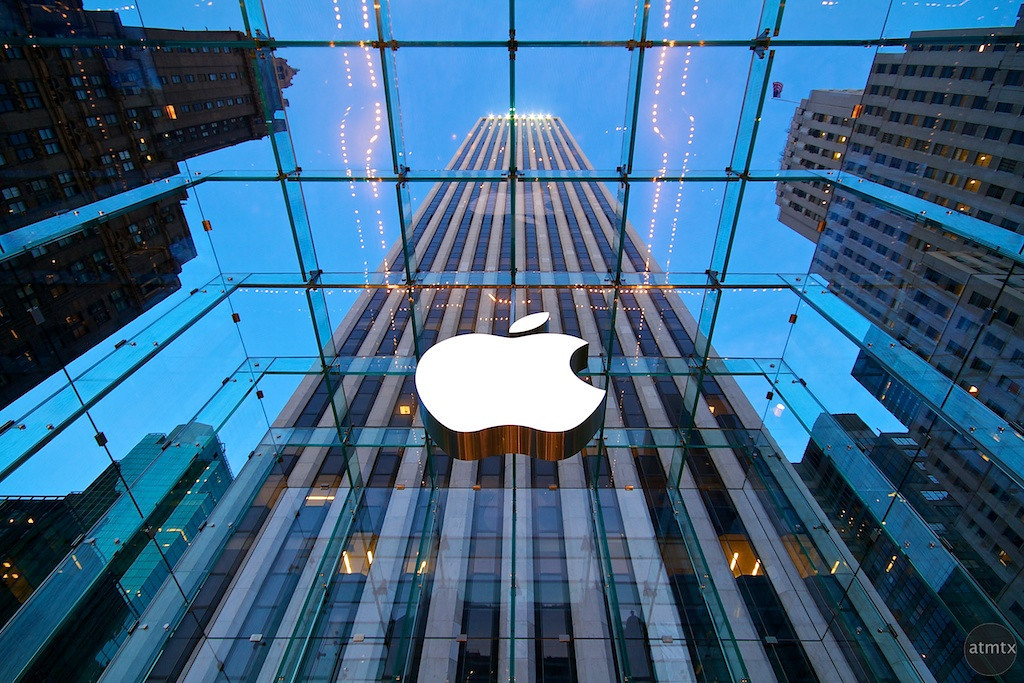SinoTech: U.S. and China Hold Trade Talks Amid Backdrop of Tech Tensions and Initial Chinese Concessions
On the U.S.-China trade war front, the first week of 2019 has brought cause for cautious optimism. Midlevel trade talks between American and Chinese officials were extended for an additional day and concluded on the afternoon of Jan. 9 in Beijing. No statements were issued on the talks’ outcomes, but the discussions generated cautious optimism.
Published by The Lawfare Institute
in Cooperation With

On the U.S.-China trade war front, the first week of 2019 has brought cause for cautious optimism. Midlevel trade talks between American and Chinese officials were extended for an additional day and concluded on the afternoon of Jan. 9 in Beijing. No statements were issued on the talks’ outcomes, but the discussions generated cautious optimism. President Trump tweeted that talks were “going very well”; in a signal of Chinese goodwill, Chinese Vice Premier Liu He made a surprise appearance at Monday’s negotiation session. Later this month, U.S. Trade Representative Robert Lighthizer and Vice Premier Liu will conduct higher-level talks.
Just prior to this week’s negotiations, China adopted a number of legal reforms touching on trade practices deemed problematic by the United States. China’s first ever comprehensive e-commerce law went into effect on Jan. 1, 2019. The law is designed to crack down on the sale of counterfeit merchandise by online retail companies; vendors found guilty of intellectual property infringement can be fined up to 2 million yuan. And in late December, the National People’s Congress Standing Committee began reviewing a draft foreign investment law, which would, among other provisions, ban the forced transfer of foreign technology to Chinese companies “by administrative means.” The committee will hold public consultations until Feb. 24.
China has also made some initial concessions directly tied to bilateral trade negotiations. In December, Beijing announced that it would slash tariffs on American auto imports from 40 percent to 15 percent. The lowered rate went into effect on January 1 and will last for at least three months. Moreover, as trade talks began on Monday, Chinese importers ordered at least 180,000 tons of soybeans. China resumed soybean purchases from the United States in December and has since ordered over 5 million tons of U.S. soybeans. On Tuesday, China also approved five genetically-modified (GMO) crops for import in what has been interpreted as another conciliatory gesture; the U.S. remains the world’s biggest GMO producer.
Although purchase orders and tariff cuts are easily enforceable, it remains to be seen how robustly the Chinese government will implement the legal reforms that touch on structural issues such as intellectual property protection. As described by the New York Times, Chinese concessions to date combine “real concessions” with “nebulous promises.” Various analysts have questioned, for example, the extent to which the draft foreign investment law will change entrenched business practices in China. Verification of Chinese promises, already an important topic at this week’s trade talks, will likely remain a key point at the upcoming Lighthizer-Liu negotiations.
Five Eyes allies issue coordinated announcement on Chinese commercial espionage
In a rare instance of publicly coordinated attribution, on Dec. 20, the Five Eyes members—the United States, Canada, New Zealand, Australia, and the United Kingdom—accused China of a major 12-year global campaign of cybertheft of intellectual property and corporate data targeting at least 45 entities in twelve countries. The centerpiece of the coordinated effort was an indictment unsealed by the U.S. Department of Justice against two members of the “Advanced Persistent Threat 10” (APT10) hacking group linked to China’s Ministry of State Security, accusing them of conducting “extensive campaigns of global intrusions into computer systems.” In particular, they are alleged to have gained access to technology services companies and leveraged that access to infiltrate other firms. With their public denouncements, the Five Eyes—joined by a chorus of other European and Asian allies—effectively accused the Chinese government of violating Xi Jinping’s 2015 pledge to cease commercial cyberespionage.
Since May 2014, the United States has issued a series of indictments against members of the Chinese military and intelligence agencies in relation to cyberespionage. To date, these indictments haven’t had much discernible effect. In this case, the Trump administration reportedly had also considered imposing financial sanctions on Chinese entities implicated in cybertheft, but ultimately opted against it so as not to jeopardize trade negotiations. Some analysts have suggested that without stronger punishments, the coordinated effort will likely have little impact on Chinese behavior, and that the emphasis on cyber indictments may actually be backfiring and highlighting how defenseless the United States is.
Apple lowers revenue forecasts as China sales slump
The implications of the U.S.-China trade war were brought into stark relief last week when Apple reduced its revenue projections for its first fiscal quarter, which ended in December, to $84 billion from $89-93 billion on Jan. 2. In a letter to shareholders, Apple CEO Tim Cook explained that, “Most of our revenue shortfall to our guidance, and over 100 percent of our year-over-year worldwide revenue decline, occurred in Greater China across iPhone, Mac and iPad.” He noted the impact from China’s “economic deceleration” and the effect of “rising trade tensions with the United States.” China is currently the biggest smartphone market in the world and sales in the country make about 20 percent of Apple’s total sales revenue. Outside falling sales in China, Cook also cited lower than expected rates of upgrades to new iPhones in other countries as a source of reduced growth.
Following the announcement, many analysts were quick to attribute the fall in sales to reduced growth rates in China. However, Apple also faces increasing competition from domestic Chinese smartphone manufacturers and now only maintains a 7 percent market share in China. Historically, Apple has represented the higher end of the smartphone market, but consumers have increasingly switched to other brands as they begin to offer new features and maintain a clear advantage on price. American actions to punish two telecommunications companies, Huawei and ZTE, for sanctions non-compliance may also have boosted the domestic popularity of the two brands and cut into Apple’s sales. While Apple may be more heavily exposed to the Chinese market than other foreign tech companies, Samsung also announced a major drop in profits on Jan. 9, which it in part attributed to declining China sales.
In Other News …
- Huawei unveiled its new chipset, the Kunpeng 920, on Monday, Jan. 7. Huawei will use the new chipset in its Taishan servers, which feature big data and cloud storage applications. Huawei has set its sights on the market for cloud technology; the firm will face strong competition from global cloud giants such as Microsoft, IBM, or Alibaba. A Huawei executive indicated in a CNBC interview that despite the new chipset, Huawei will continue to use Intel CPUs in certain contexts. Still, Huawei’s product announcement fits into the broader trend of Chinese technology firms attempting to locate more of the global supply chain within China.
- The Trump administration is reportedly contemplating an executive order banning U.S. companies from purchasing any telecommunications equipment produced by ZTE and Huawei, two major Chinese telecom companies, according to Reuters and other sources. Such a ban, which has been under consideration for nearly a year, would be rooted in espionage concerns surrounding the two companies and issued under the International Emergency Economic Powers Act. Already federal government agencies and contractors are barred from purchasing from the two companies. If the White House issues such an order, it would likely pose a particular burden for rural networks which rely on Huawei and ZTE equipment due to its lower price.
- On Jan. 3, the Chinese robotic probe “Chang’e 4” became the first rover to successfully land on the far side of the moon. The rocket carrying the Chang’e 4 had launched from Xichang in southern China on Dec. 7. The mission will investigate questions surrounding the moon’s formation and early evolution and will also investigate whether whether plants can grow on the moon. Some analysts have argued that China’s space ambitions are at least partly driven by a desire for “military dominance of space.”
- China has successfully constructed a giant, experimental radio antenna, capable of emitting extremely low frequency (ELF) waves. The South China Morning Post, which broke the story, interviewed a number of researchers who worked on the antenna, which took 13 years to build. Though the antenna has civilian applications, ELF technology also has significant military applications, allowing submarines within a given radius to communicate from deep water. The facility is located in densely-populated central China. The World Health Organization (WHO) has warned that ELF fields are “possibly carcinogenic to humans.”
- In late December, Dai Wei, founder of the bike-share company Ofo, revealed that the firm is considering filing for bankruptcy. In Beijing, hundreds of Ofo users gathered outside the company’s headquarters in a futile attempt to retrieve their refundable deposits. Ofo’s cash flow problems have only worsened in the new year.
Commentary
For Lawfare, Jack Goldsmith and Robert Williams evaluate why the cyber indictment strategy the United States has relied on in response to Chinese cybertheft isn’t working. Andrei Gribakov examines cross-border data privacy rules in Asia. Annie I. Antón and Justin D. Hemmings consider gaps that remain in cybersecurity, vendor services, and business-to-business relationships following the reforms to the Committee on Foreign Investment in the United States. Allison Peters considers what can be done to close the global cyber enforcement gap. Sven Herpig and Ari Schwartz describe the use of vulnerabilities-equities processes by governments to manage and disclose the discovery of previously unrevealed flaws known as “zero-day vulnerabilities.” Meanwhile, in a talk broadcast on the Lawfare Podcast, Sen. Mark Warner lays out a “New Doctrine for Cyberwarfare & Information Operations,” which includes the setting of international norms and reorienting defense spending. On the Cyberlaw Podcast, Stewart Baker, Nate Jones and David Kris discuss the APT10 indictment (at 8:05) and whether the threat of a U.S.-China “quantum arms race” is overhyped (at 23:57).
The South China Morning Post offers a look back on tech developments in China in 2018 including in AI, e-commerce, and cryptocurrency, as well as a look forward to what 2019 could bring. For the Council on Foreign Relations, Adam Segal marks 2018 as the year that inaugurated the U.S.-China technology cold war. Meanwhile, Anne McElvoy analyzes Huawei’s efforts to provide 5G mobile technology to the
United Kingdom in the Guardian and concludes a technology truce, not a trade war, is needed. At the Belfer Center, Michael B. Greenwald analyzes how debt held in dollars by Chinese tech companies may affect their compliance with U.S. sanctions policy. In Politico, Andrew Restuccia and Megan Cassella lay out how U.S. Trade Representative Robert Lighthizer helped develop and implement a hardline
trade policy toward China. To succeed in the trade war, argues Reihan Salam in The Atlantic, President Trump should put pressure on the Chinese government by emphasizing the interests of Chinese workers, who have not seen many of the benefits of the current Chinese state-led model economic model.
In Foreign Affairs, Yan Xuetong considers the transition to a bipolar world, while Oriana Skylar Mastro explores China’s ambitions for regional hegemony. In the Financial Times, Martin Wolf explores whether, due to unsustainable investment rates and limits on export-led growth, China may struggle to grow as quickly as expected. Finally, James A. Lewis argues on the CSIS website that in the space race, as in many other areas of U.S.-China competition, “it is not that China is speeding up but that the United States is slowing down.”






